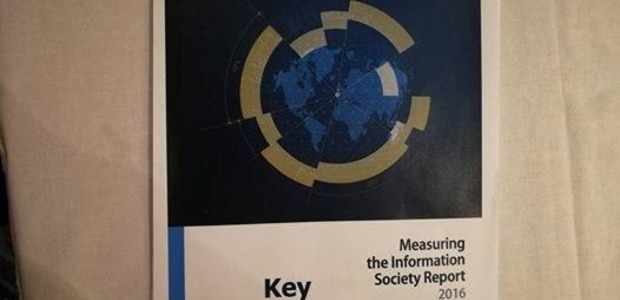advertisement
#wtis2016: Mobile-broadband networks cover 84 percent of Global population, only 47 per cent are using the Internet
An increasingly ubiquitous, open, fast and content-rich Internet has changed the way many people live, communicate, and do business, delivering…

An increasingly ubiquitous, open, fast and content-rich Internet has changed the way many people live, communicate, and do business, delivering great benefits for people, governments, organizations and the private sector. However, many people are still not using the Internet, and many users do not fully benefit from its potential.
While 84 percent of the world’s people live in an area where mobile-broadband services are offered, only 47 percent are actually using the Internet. While infrastructure deployment is crucial, high prices and other barriers prevent people from entering the digital world.
These are some of the key issues highlighted in 2016 Measuring the Information Society Report as key barriers to the Internet Uptake Globally. The report launched today at the 14th World Telecommunications Indicators Symposium presents a global and regional overview of the latest developments regarding information and communication technologies (ICTs), based on internationally comparable data and agreed methodologies.
advertisement
It aims to stimulate the ICT policy debate in the ITU Member States by providing an objective assessment of how countries have performed in the field of ICT and by highlighting areas that need further improvement.
“The price of the service (and of the device) remains a critical determinant for whether people make use of ICTs. I am pleased to see that, globally, the prices for fixed and mobile communication services continued to fall over the past year. The reduction in mobile-broadband prices is particularly pleasing, as it leads not only to more people being connected to the Internet but also to more intense Internet usage among those who are already online,” said Brahima Sanou, Director Telecommunications Bureau (BDT), ITU.
The report also revealed that The availability and affordability of high-speed fixed broadband services remained a challenge in the majority of low-income countries. In the world’s least developed countries, a fixed-broadband plan with a minimum of 1GB of data per month still corresponds, on average, to over 60 per cent of GNI per capita.
advertisement
“In addition, in those least developed countries where the service is offered, speed and quality are usually lower than in developed countries. This is a constraint not only for the domestic business sector but also in terms of using ICTs to accelerate the achievement of the Sustainable Development Goals (SDGs), through e-agriculture, e-health, e-education, e-governance, gender equality, just to mention a few,” added Mr. Sanou.
Education and income levels are strong determinants, not only of whether or not people use the Internet but also of how they use it. The Report finds that Internet users with higher levels of education use more advanced services, such as e-commerce and online financial and government services, to a higher degree than Internet users with lower levels of education and income levels, who use the Internet predominantly for communication and entertainment purposes.
The Report also showed that the full potential of the Internet remains untapped with internet users with higher levels of education using more advanced services, such as e-commerce and online financial and government services to a higher degree than Internet users with lower levels of education and income levels, who predominantly use the Internet for communication and entertainment purposes. This suggests that many people are yet to benefit fully from the opportunities brought by the Internet.
advertisement
However, the report cautions that access to the Internet is not enough; policy-makers must address broader socio-economic inequalities and help people acquire the necessary skills to take full advantage of the Internet.